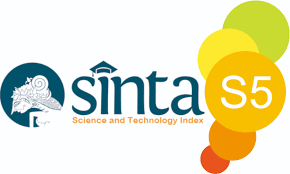Innovation of Electronic Card-Based Public Transportation Fare Payment Systems
DOI:
https://doi.org/10.34010/injuratech.v3i2.14327Keywords:
Electronic Card, Public Transportation, Payment System, InnovationAbstract
The development of technology is increasingly rapid, encouraging the people of Indonesia, especially Bandung city, to start shifting from cash to the era of a cashless society, especially when it is currently in the Covid-19 pandemic. This research aims to design the concept of electronic services for transportation in Bandung. The method used was descriptive to 25 respondents. These results indicated that the Bandung communities need the latest innovations to simplify the payment system. The use of the EBAP Card is only by using a card that is attached to a sensor machine provided by public transportation. EBAP Card is made as a substitute for cash for public transportation payment transactions. This EBAP Card payment transaction is faster than using cash. The direct impact of this program's benefits for the community is that the public can pay public transport fares with an EBAP Card that is safe, comfortable, accurate, and efficient. This payment system will reduce direct contact during this Covid-19 period. With the implementation of electronic-based payments, payment transaction services on public transportation are faster, so it is hoped that the travel convenience of public transport users in Bandung will increase.
References
[2] Suryadjaja, P. S., Hutagalung, M., & Sutarto, H. Y. (2020). Modeling traffic flows with fluid flow model. International Journal of Informatics, Information System and Computer Engineering (INJIISCOM), 1(1), 1-12.
[3] Ghorbanzadeh, O., Moslem, S., Blaschke, T., & Duleba, S. (2018). Sustainable urban transport planning considering different stakeholder groups by an interval-AHP decision support model. Sustainability, 11(1), 9.
[4] Costa, V., Fontes, T., Costa, P. M., & Dias, T. G. (2015). Prediction of journey destination in urban public transport. In Progress in Artificial Intelligence: 17th Portuguese Conference on Artificial Intelligence, EPIA 2015, Coimbra, Portugal, September 8-11, 2015. Proceedings 17 (pp. 169-180). Springer International Publishing.
[5] Kurniawan, B., & Soegoto, E. S. (2019). Radio frequency identification for academic management. Journal of Engineering Science and Technology, 14(4), 2372-2385.
[6] A. S. Briand, E. Côme, M. Trépanier, and L. Oukhellou, "Analyzing year-to-year changes in public transport passenger behaviour using smart card data," Transportation Research Part C: Emerging Technologies, vol. 79, pp. 274-289, 2017.
[7] Briand, A. S., Côme, E., Trépanier, M., & Oukhellou, L. (2017). Analyzing year-to-year changes in public transport passenger behaviour using smart card data. Transportation Research Part C: Emerging Technologies, 79, 274-289.
[8] Lee, E. H., Lee, H., Kho, S. Y., & Kim, D. K. (2019). Evaluation of transfer efficiency between bus and subway based on data envelopment analysis using smart card data. KSCE Journal of Civil Engineering, 23, 788-799.
[9] Yap, M., Nijënstein, S., & van Oort, N. (2017, January). Improving predictions of the impact of disturbances on public transport usage based on smart card data. In Transportation Research Board 96th annual meeting. Washington DC.
[10] Kurniawan, B. (2018, August). Integrated Information System for Radio Frequency Identification Based Administration and Academic Activities on Higher Education. In IOP Conference Series: Materials Science and Engineering (Vol. 407, No. 1, p. 012097). IOP Publishing.
[11] Herlianta, Y. Z., & Giyarsih, S. R. (2015). Persepsi dan Penggunaan Smartcard untuk Meningkatkan Pelayanan Sistem Transportasi pada Transjogja di Kota YOGYAKARTA. Jurnal Bumi Indonesia, 4(4).
[12] Alsger, A., Assemi, B., Mesbah, M., & Ferreira, L. (2016). Validating and improving public transport origin–destination estimation algorithm using smart card fare data. Transportation Research Part C: Emerging Technologies, 68, 490-506.
[13] Li, T., Sun, D., Jing, P., & Yang, K. (2018). Smart card data mining of public transport destination: A literature review. Information, 9(1), 18.











